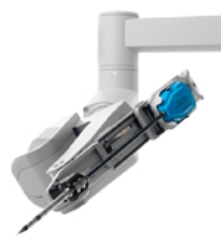Men who undergo prostatectomy are not only concerned about the removal of prostate cancer but also about urinary continence and sexual potency that might get affected during the procedure.
A number of men are choosing radical prostatectomy surgery, which is a minimally invasive surgery aided by robotics. Robotic surgery is performed by Dr. David Samadi at the Mount Sinai Medical Center.
 radical protatectomy da Vinci System
radical protatectomy da Vinci System
A recently released study by the National Institute of Health Research drew a comparison between standard post-prostatectomy care and one-to-one training for pelvic floor toning. The comparison yielded a result in favour of pelvic floor toning exercises for improving urinary control. Another point revealed in the study was that there was no or very little evidence suggesting that this therapy improved urinary incontinence. Dr. Samadi sometimes recommends pelvic floor exercises for some of his patients who complain of prolonged urinary incontinence after surgery. Robotic prostatectomy makes use of the da Vinci System that offers enhanced visualization and the incisions are much more precise. The precision offered by the system allows Dr. Samadi to leave the nerves surrounding the prostate untouched. As much as precision is helpful in surgery, choosing a skilful surgeon is much more important.
Dr. Samadi in particular stresses on the importance in choosing a surgeon who is an expert in performing the procedure. He added that while performing prostatectomy he concentrates on delivering the treatment trifecta, which means along with making his patients free from cancer he ensures that the urinary and sexual functions are left intact. The success rates of the surgeries performed by him reveal that 96% of the patients have regained urinary continence and 87% have got back to normal sexual functioning within a year after surgery. For some patients he makes them go through pelvic floor exercises, called Kegels, as a follow up after prostatectomy.